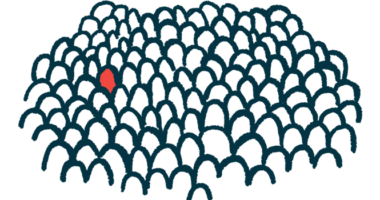One-third Pituitary Gland Removal May Help Some With Cushing’s Disease

For people with Cushing’s disease whose pituitary tumor cannot be identified, removal of one-third of the pituitary gland followed by multidisciplinary treatment and care can lead to favorable outcomes, a small study suggests.
The study, “Lateral one-third gland resection in Cushing patients with failed adenoma identification leads to low remission rates: long-term observations from a small, single-center cohort,” was published in the journal Acta Neurochirurgica.
Cushing’s disease is caused by a tumor in the brain’s pituitary gland. The tumor leads to the excessive production and release of adrenocorticotropic hormone (ACTH), which prompts the adrenal glands, which sit atop the kidneys, to produce abnormally large amounts of cortisol.
Surgical removal of the disease-causing tumor is the standard treatment for Cushing’s disease. Imaging technologies like MRI can help to locate a tumor and confirm a disease diagnosis, as can inferior petrosal sinus sampling (IPSS), a procedure used to measure ACTH levels in the blood vessels that drain the pituitary gland.
In some cases, however, a disease-causing tumor cannot be found, even while surgeons are operating and inspecting the pituitary gland. Surgeons may then choose to remove all or half of the pituitary gland. But this can lead to hypopituitarism, a condition in which the pituitary gland ceases to work as it should, stopping to produce or producing very small amounts of certain hormones.
An alternative approach is to remove about one-third of the pituitary gland, on the side that IPSS has detected higher ACTH levels and where a pituitary tumor is more likely to be found.
A team of researchers in Germany and Switzerland evaluated this approach, reporting the outcomes of 13 patients (10 women and three men, with a median age of 49) who had a third of their pituitary gland removed.
Tissue analyses of the removed sections of patients’ pituitary glands revealed the presence of ACTH-producing tumors in five samples. In four other samples, there were signs of ACTH hyperplasia, a condition in which ACTH-producing tissues in the pituitary gland become enlarged, which sometimes leads to cancer.
Three other patient samples were positive for Crooke-hyaline, a change in pituitary cells that is indicative of increased cortisol levels.
The remaining patient sample was normal upon analysis.
Three months after the surgery, six patients were in disease remission. Of these, three had ACTH-producing tumors, two had ACTH hyperplasia, and one tested positive for Crooke-hyaline. In three patients, cortisol levels initially normalized, but then the disease returned.
Long-term remission (a median follow-up of 14 years) was noted in 10 patients: four with ACTH-producing tumors, three with ACTH hyperplasia, two who tested positive for Crooke-hyaline, and one who did not show any pituitary tissue abnormalities.
Researchers noted that long-term remission usually required additional treatments, such as surgery on the adrenal glands or the use of the cortisol-suppressing medication metyrapone (marketed as Metopirone).
“High long-term remission rates [more than 10 years] can be attained [after one-third pituitary removal], but only with an interdisciplinary multimodal approach,” the researchers wrote.
Generally, substantial complications were not associated with the surgery. One patient experienced rhinoliquorrhea, where fluid that normally surrounds the brain leaks from the nose, and another had transient diabetes following surgery.
After surgery, two patients developed hormonal abnormalities that required treatment, one with testosterone, and one with growth hormone. No deaths were associated with surgery.
Based on these findings, the researchers concluded that “lateral one-third gland resection resulted in low rates of additional pituitary insufficiencies, but also in low cure rates of hypercortisolism [high cortisol levels].”
The main limitation of this study, according to investigators, was its small sample size, which made it difficult to do statistically meaningful comparisons between patient subgroups (for example, those with or without confirmed ACTH-producing tumors or ACTH hyperplasia).
“Bearing in mind the sample size of this audit, the indication for lateral one-third-gland resection has to be critically appraised and discussed with the patients before surgery,” the team wrote.






